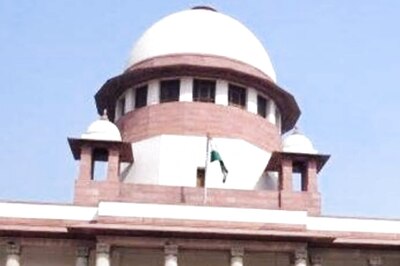
views
CHENNAI: “The crowds were greater than ever, the hills were covered with varicoloured masses. The artillery guns roared their welcome to Lord Harris, who on alighting, was received by a guard of honour of the 19th regiment and officials of the Private Railway Company, headed by Major Jenkins, their manager. His Lordship’s speech was very commendatory upon the economy and expedition with which the line has been thus far completed, a distance of 65 miles in three years at a cost which he stated was estimated at about 5,500 Pounds Sterling per mile.” This was how The Illustrated London News magazine, on September 6, 1856, described the arrival of the first train in south India from Royapuram, then a coastal hamlet, where the British chose to establish the third railway station in the country. Indeed, the then Madras would have been given the honour of housing the first railway station in India, if a proposal for setting up a rail system in the sub continent in the year 1832 had materialised. A survey for building a railroad between Madras and Bangalore had been conducted but was dropped four years later, even as other proposals were forwarded to the British East India Company, who then governed India. “It was the mercantile community of Madras Presidency who lobbied for rail connectivity, opening the windows for railways in South India,” A T B Bose, a former engineer, said. This opened a new chapter in the history of Madras with the Royapuram Railway Station being inaugurated on June 28, 1856 by the then Governor of Madras, Lord Harris. Unfortunately, only the history of this majestic station remains glorious. About 156 years later, the prestigious heritage building that had housed the headquarters of the Southern Railway stands dilapidated. The wooden staircase leading to the first floor of the building is covered with a thick layer of mud and bushes are seen branching out of the old structure. Sandwiched between the Bay of Bengal and a century-old vehicular bridge, the Royapuram railway station houses the 150-year-old entrance building. Tall roofs fixed with sliced teak wood in the red and white-coated heritage building still stand as an example of some of the marvellous work of British India. Interestingly, it happens to be the only building renovated in connection with the 150th anniversary celebrations of the station coming to existence, while other buildings were ignored. Moreover, the roof between two walls, from where the first train from south India chugged out, has disappeared. According to Bose, the Royapuram Railway Station was functioning as a terminal. He cites the name of the high road connecting Royapuram with Parrys – the North Railway Terminus Road – to support his claim. “However, it lost its prominence after a major fire broke out in the early 1960s, destroying vital files, including the birth certificates of employees,” he added.



















Comments
0 comment